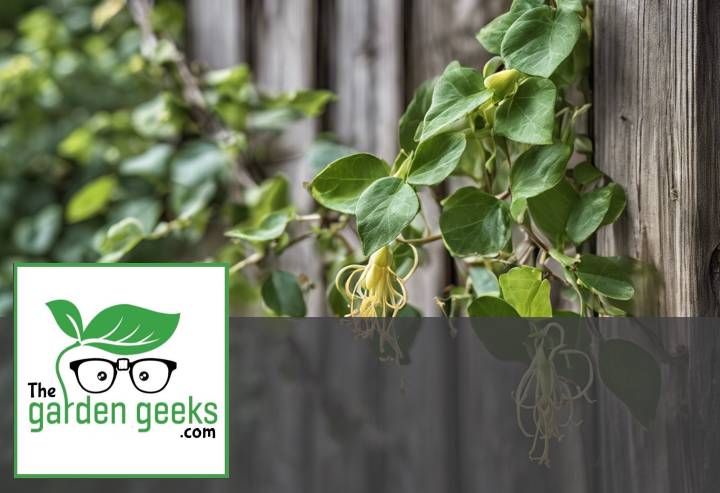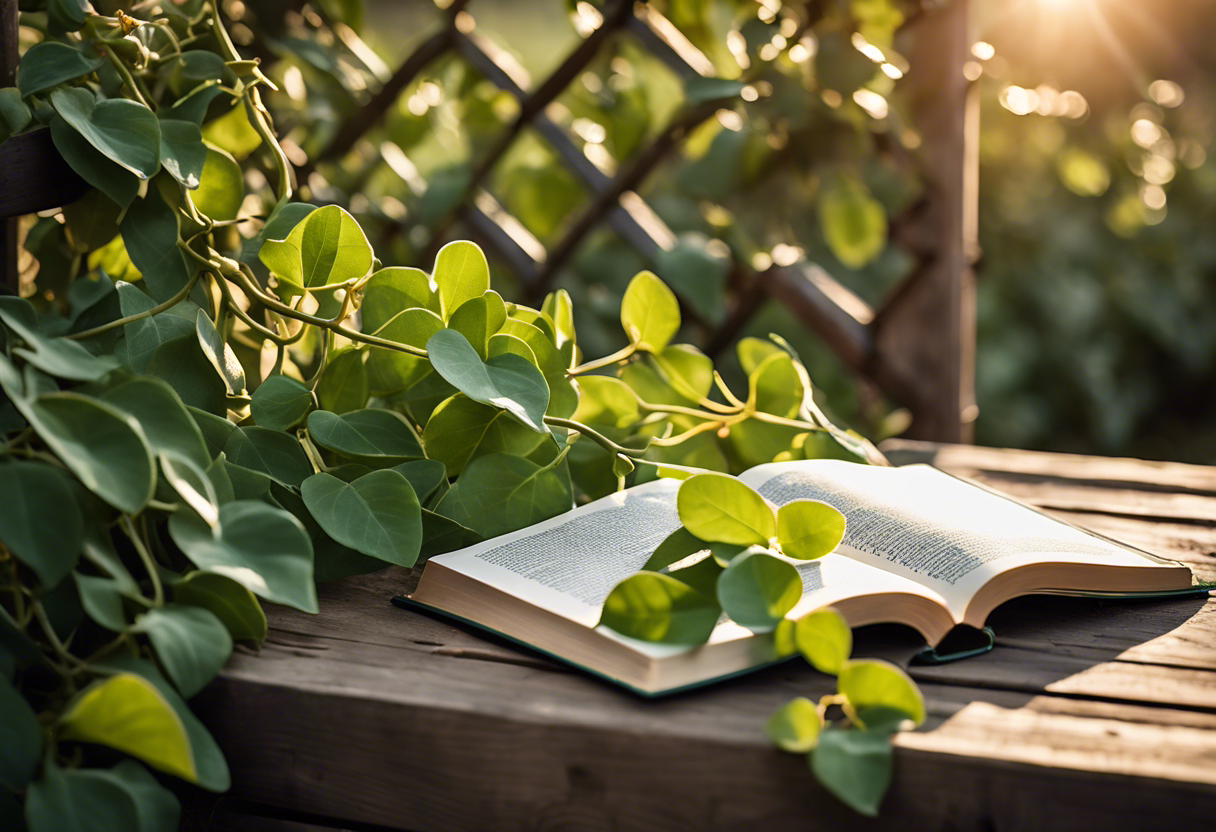Well, hello there, fellow green thumb! Ever gazed at your garden, eyes squinting in the sunlight, and wondered Why Isn’t Honeysuckle Flowering? You’re not alone. I’ve been there too – watering can in hand, a perplexed look on my face.
Don’t worry though; it’s not as complicated as it might seem. We’ll dive into the possible reasons why your honeysuckle hasn’t bloomed yet. So buckle up and keep reading about (6 Reasons) Why your Isn’t Honeysuckle Flowering.
Key Takeaways
- Honeysuckle may not flower due to insufficient sunlight; they require full sun to partial shade.
- Improper pruning can also hinder flowering; prune after the blooming period, not before.
- Lack of nutrients or poor soil conditions can affect blooming; ensure a well-draining soil rich in organic matter.
- Overwatering or underwatering can cause stress leading to no flowers.
- Pests and diseases like aphids or powdery mildew can prevent flowering.
- Plant maturity matters; young honeysuckles may take time to start flowering.
What is Honeysuckle and its Flowering Requirements?
Honeysuckle, a plant that’s as sweet as its name suggests. It’s a charming climber with a heady aroma that can transform any garden into a sensory delight. But why isn’t your honeysuckle flowering? Well, let’s dive into the world of this enchanting plant.
Brief Overview of Honeysuckle
The honeysuckle plant is quite the show-off in the garden. With its vibrant, trumpet-shaped flowers and glossy leaves, it’s hard not to notice this beauty. Its growth habits are pretty straightforward – it loves to climb! Give it a trellis or fence, and watch it ascend with gusto.
But here’s the catch: honeysuckles aren’t just about looks. They’re also known for their intoxicating fragrance that fills the air, especially during twilight hours. So if you’re planning an evening garden party, these babies will be your best friends!
Ideal Conditions for Honeysuckle to Flower
Now onto the main event: flowering requirements. To get your honeysuckle blooming like a champ, there are some key environmental factors to consider. First off, location matters! These plants love sun but can tolerate partial shade too.
Next up: watering regime. Honeysuckles prefer well-drained soil and don’t appreciate waterlogged roots – so no overwatering folks! And lastly, they need some good old TLC in terms of pruning and feeding to encourage lush growth and abundant blooms.
Common Varieties of Honeysuckle and Their Specific Needs
There are many honeysuckle varieties, each with their own quirks and care needs. The Japanese honeysuckle is one tough cookie that can withstand harsh conditions but beware – it can become invasive if not controlled!
Then we have the Trumpet honeysuckle which is a native American beauty that attracts hummingbirds with its bright red flowers. It’s drought-tolerant but loves a good sunbathing session.
And let’s not forget the Woodbine honeysuckle, known for its stunning two-toned flowers. This one prefers cooler climates and well-drained soil. So, understanding your specific variety’s needs can be the key to unlock a spectacular honeysuckle display!
Why Isn’t Your Honeysuckle Flowering?
Well, there could be a few reasons why your honeysuckle isn’t putting on a show. Let’s dive into some of the most common culprits that might be causing your honeysuckle not flowering.
Insufficient Light Exposure
Your honeysuckle may be playing hide and seek with the sun. It needs plenty of light to bloom. If it’s stuck in a shady spot, it might not flower as expected. The light requirements for honeysuckle are pretty straightforward – they love sun! So, if you notice insufficient sunlight effects on plants, like stunted growth or lack of flowers, consider moving your plant to a sunnier location. This simple step can greatly improve the light exposure for plants and get your honeysuckle back to blooming.
Inadequate Watering Practices
Water is life, right? But too much or too little can spell trouble for your honeysuckle. Overwatering can lead to root rot while underwatering can stress the plant, both scenarios leading to less or no flowers. Understanding the watering needs of honeysuckles is crucial for their health and flowering potential. Remember, these plants prefer well-drained soil and moderate watering – not too dry, not too soggy!
Lack of Necessary Nutrients in Soil
Just like us humans need a balanced diet, plants do too! A lack of necessary nutrients in the soil can result in poor growth and fewer flowers. If you suspect nutrient deficiency (yellow leaves are often a telltale sign), consider enriching your soil with compost or a slow-release fertilizer designed for flowering plants. These additions will provide essential soil nutrients for flowering plants and help combat any nutrient deficiency symptoms in plants.
Incorrect Pruning Techniques
Pruning is an art form – do it wrong, and you might just be snipping away your honeysuckle’s chances of flowering. If you’re not following the right pruning techniques for flowering plants, you could be doing more harm than good. Prune your honeysuckle in late winter or early spring to encourage new growth and more flowers. And remember, always use clean, sharp tools to avoid spreading disease.
Pests or Disease Affecting the Plant
Pests and diseases are like uninvited guests at a party – they can really ruin the mood (or in this case, prevent your honeysuckle from flowering). Keep an eye out for common pests like aphids or powdery mildew. If you spot any signs of these common pests and diseases in honeysuckles, take action immediately! A healthy plant is a happy plant, and a happy plant produces flowers.
Unsuitable Climate or Weather Conditions
Last but not least, let’s talk about weather. Honeysuckles are pretty hardy, but extreme weather conditions can stress them out and hinder their ability to flower. Whether it’s too hot, too cold, too wet or too dry – unsuitable climate can all affect your honeysuckle’s performance. Try to provide some shelter during extreme weather conditions to keep your plant comfortable and ready to flower when the time is right.
How to Encourage Your Honeysuckle to Flower?
Adjusting Light Exposure
Ever wondered why isn’t honeysuckle flowering? Well, it might be craving some sunlight. You see, honeysuckles are sun-loving plants. They need a good dose of sunlight every day to bloom beautifully. So, if your honeysuckle is stuck in a shady corner, consider moving it to a brighter spot. Remember, the right honeysuckle light requirements can make all the difference.
Improving Watering Techniques
Watering is another crucial factor that can influence your honeysuckle’s blooming potential. Too much water and you’ll drown the poor thing; too little and it’ll dry up. The trick is to keep the soil moist but not soggy. This ideal watering for honeysuckles ensures they get just the right amount of hydration without getting waterlogged.
Enriching Soil with Essential Nutrients
Now let’s talk dirt – literally! A nutrient-rich soil can work wonders for your honeysuckle’s flower production. Adding compost or organic matter can enrich the soil and provide essential nutrients that boost growth and flowering. Look out for nutrients like nitrogen, phosphorus, and potassium – they’re like superfoods for your plant!
Applying Correct Pruning Methods
Pruning is another secret weapon in your honeysuckle care guide arsenal. Proper pruning encourages new growth and more blooms by removing old or dead wood that could be hogging resources. So grab those shears and start snipping – but remember, timing is everything! Late winter or early spring is usually the best time for this task.
Treating Pests and Diseases
Pests and diseases are like party crashers – they show up uninvited and ruin all the fun! If you notice any signs of pests or diseases on your honeysuckle plant, act fast! Early treatment can save your plant and help it flower more abundantly. Remember, a healthy honeysuckle plant is a happy one!
Adapting to Climate or Weather Conditions
Last but not least, let’s talk about climate. Honeysuckles are pretty adaptable plants, but they do have their preferences. They love a temperate climate with mild winters and warm summers. So if you’re living in an area with extreme weather conditions, you might need to provide some extra care to encourage your honeysuckle to bloom.
To Wrap Up
In the spirit of a detective wrapping up a whodunit, we’ve sleuthed out six reasons why your honeysuckle might be playing hard to get with its flowers. Just like a picky eater refusing broccoli, your plant may be rejecting improper sunlight, soil conditions, water amounts, pruning methods, pests or diseases.
Remember, patience is key when dealing with these diva-like plants. If you’re still puzzled over Why Isn’t Honeysuckle Flowering, don’t hesitate to seek professional advice. After all, every crime-solving team could use a Sherlock Holmes!





